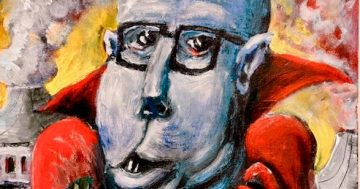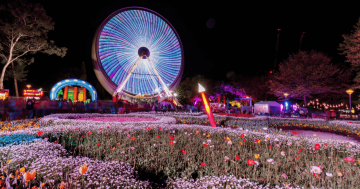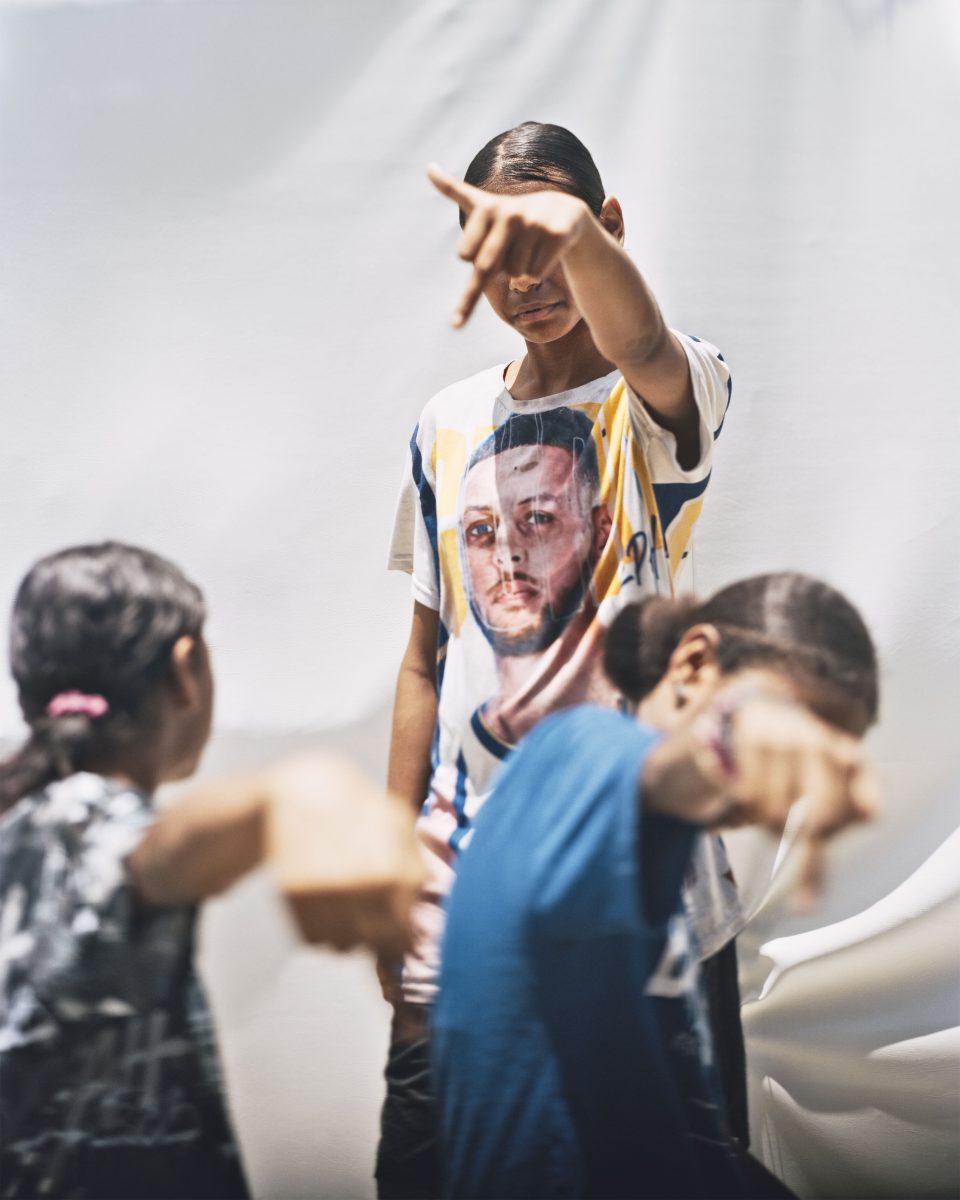
Hoda Afshar, Untitled #01, (from the series Code Black/Riot), 2024, pigment photographic print on paper, 148.5 cm x 119 cm. Photo: NPG.
The 18th iteration of the National Photographic Portrait Prize has opened at the National Portrait Gallery (NPG) in Canberra with photographs from 48 finalists selected from more than 1400 entries.
The dazzling, mainly large-format photographs generally convey ideological narratives rather than simply capturing likenesses.
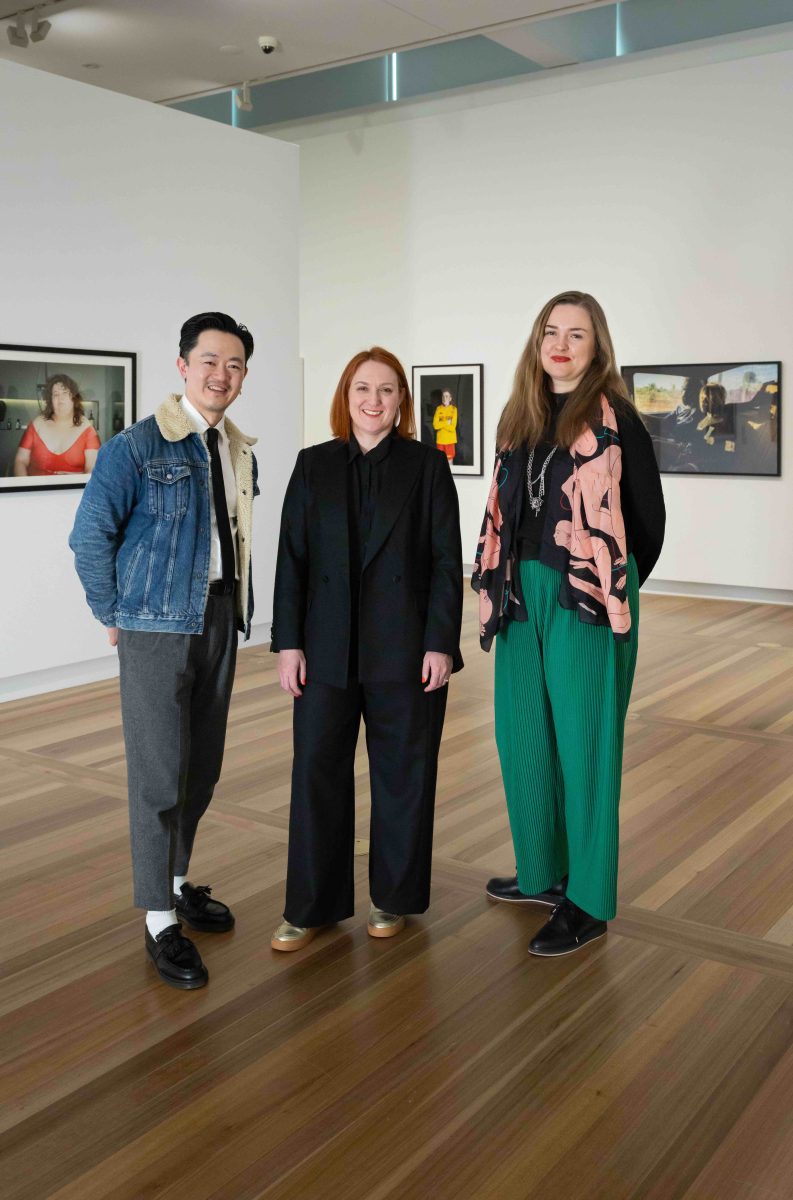
National Photographic Portrait Prize 2025 judges Benjamin Law, Leigh Robb (centre) and Serena Bentley. Photo: NPG.
The three dominating themes in this exhibition are LGBTQIA+ people and their lifestyles, the plight of First Nations peoples and the migrant experience. Without access to the 1400 entries, it is impossible to say whether the three well-credentialled judges – writer and broadcaster Benjamin Law, NPG senior curator Serena Bentley and Leigh Robb, curator of contemporary art at the Art Gallery of South Australia – simply chose the best photographs on hand or sought to give voice to particular heartfelt issues.
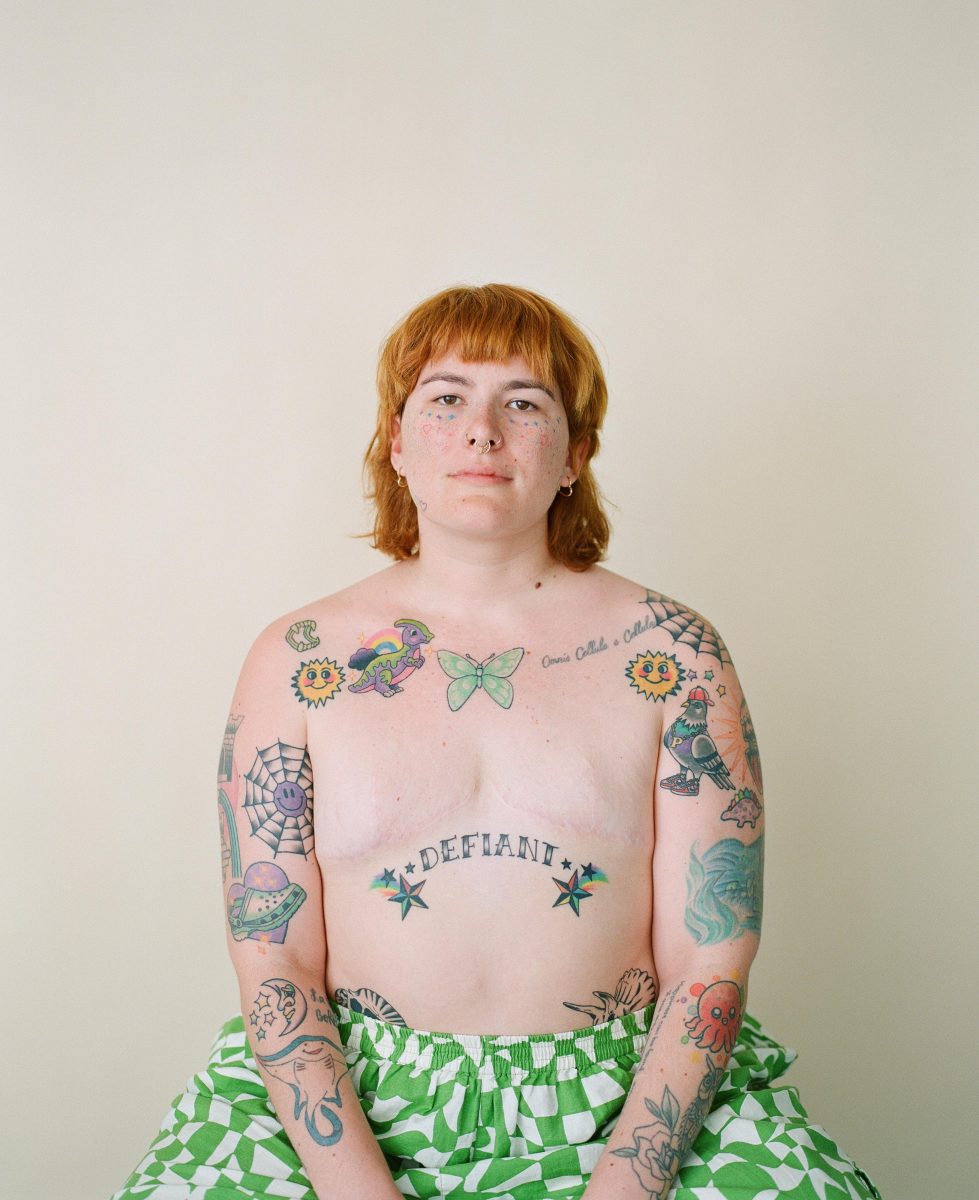
Bri Hammond, Sonny Jane Wise, pigment photographic print on paper, 99.2 cm x 80.7 cm. Photo: NPG.
Unlike the Archibald portrait prize in Sydney, where there is a proliferation of huge heads of the famous and infamous generally poorly painted in fashionable styles, most of the sitters in the photographic portrait prize are not well known outside intimate circles – self-portraits, images of intimate friends, relatives and neighbours.
The winning entry for the $50,000 prize is Hoda Afshar’s Untitled #01 (from the series Code Black /Riot), a huge and impressive colour pigment print. It is a curious photograph in the context of a portrait prize as none of the faces of the three children can be seen.
The photographer explains: “Participants were invited to have their portraits taken, using a means of their own choosing to conceal their identities while making a personal statement. Some of them chose flowers or bubbles. Others a flag, mask or face paint. The three girls here chose this gesture. Many young people in this community prefer to conceal their faces in their photos to avoid being identified by the youth justice system.”
It is a powerful, effective and daunting image. This is the second time that Afshar has won this prize.
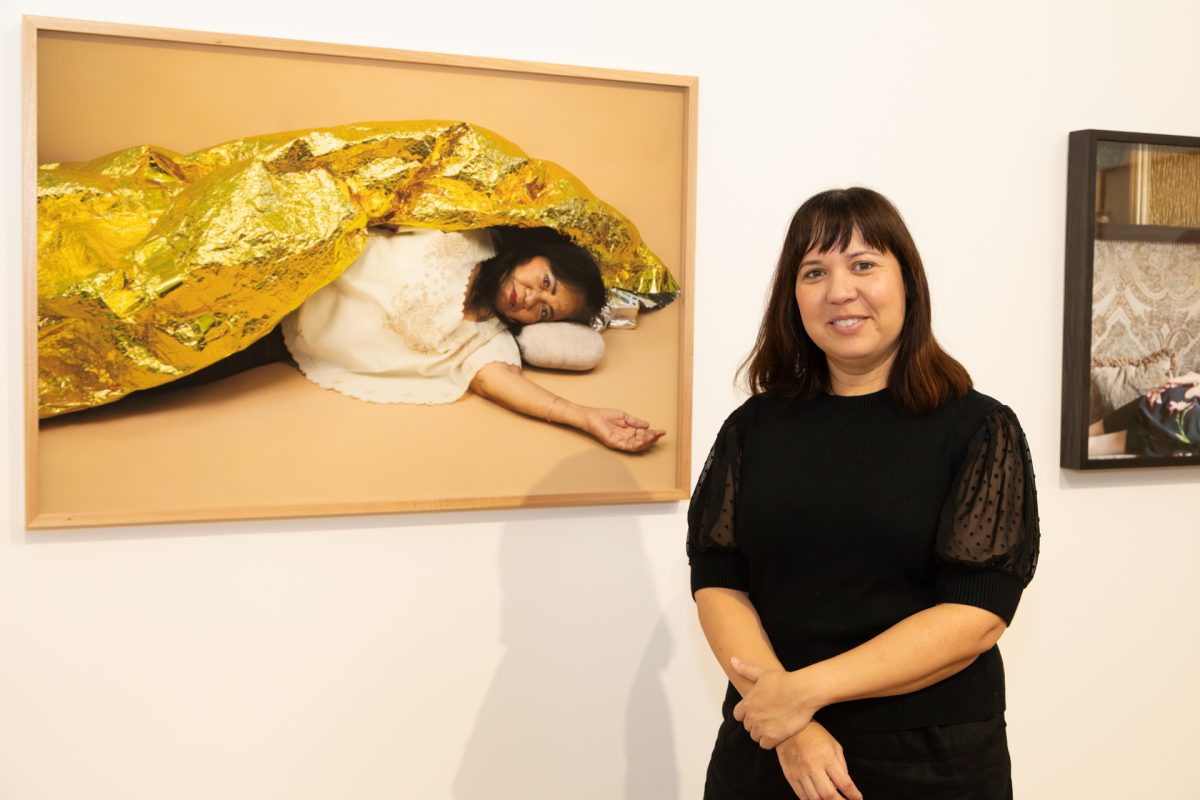
First-Time Finalist Award winner Sherry Quiambao, Mother Dreams on a Stone, 2024, pigment photographic print on paper, 71.3 cm x 107.6 cm. Photo: Michelle Kroll.
The $3000 First-Time Finalist prize went to Sherry Quiambao’s Mother Dreams on a Stone, another colour pigment print. This Australian-Filipino artist shows her mother, apparently lying on the floor with her head resting on a stone and her body wrapped in a golden emergency blanket. It is an image of a mother as a survivor in a tale of migration.
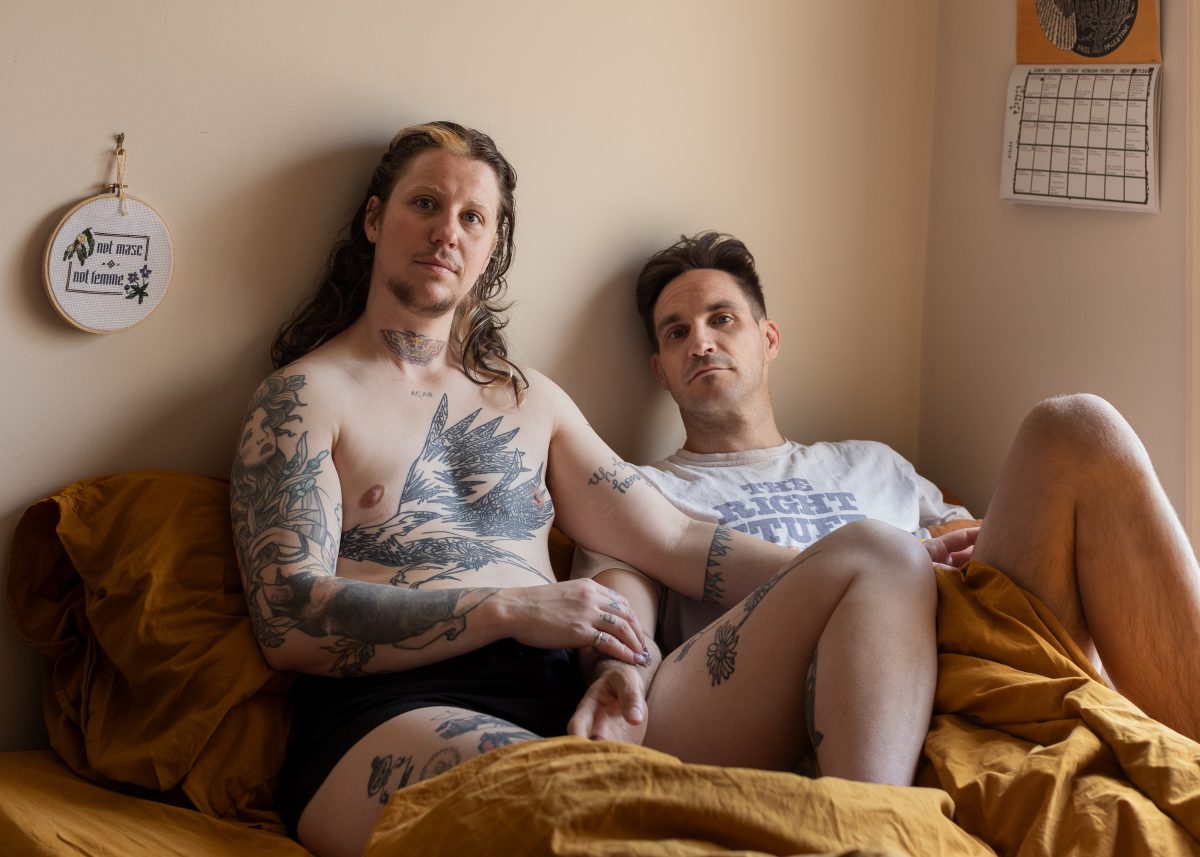
Hilary Wardhaugh, Zev and Nick, 2025, pigment photographic print on paper, 72.3 cm x 101.6 cm. Photo: NPG.
Bri Hammond’s Sonny Jane Wise is an effective and defiant image of a sitter who the artist describes as “a queer, non-binary, disabled and neurodivergent advocate and writer, and defier of systems”.
Hilary Wardhaugh is a Canberra-based photographer whose image Zev and Nick narrates a non-monogamous, loving relationship.
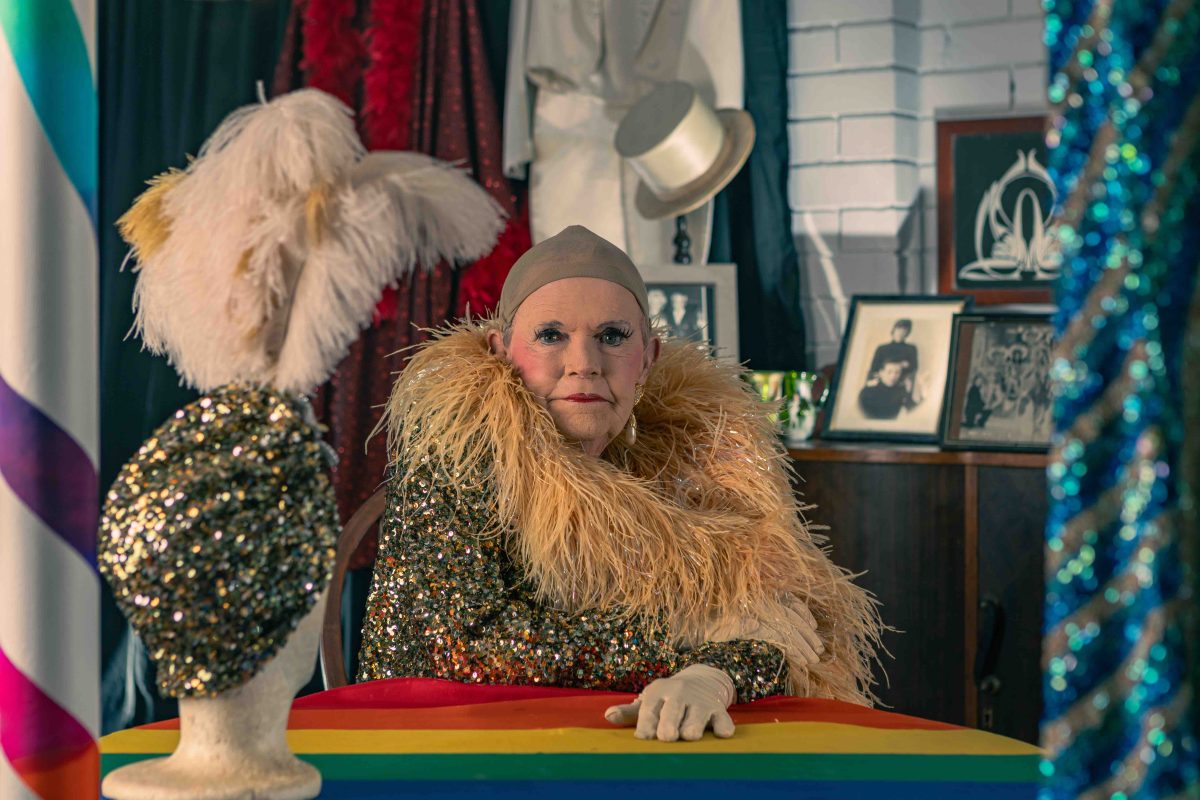
Jodie Harris, Stan, 2025, pigment photographic print on paper, 50 cm x 74.4 cm. Photo: NPG.
Jodie Harris has produced a masterly, almost conventional portrait titled Stan. The sitter, Dame Stan Munro, 84, is described as being arguably Australia’s oldest performing drag queen. There is a great intimacy in the work, whereby the surrounding decor becomes a wonderful biographic commentary on this person’s life and career.
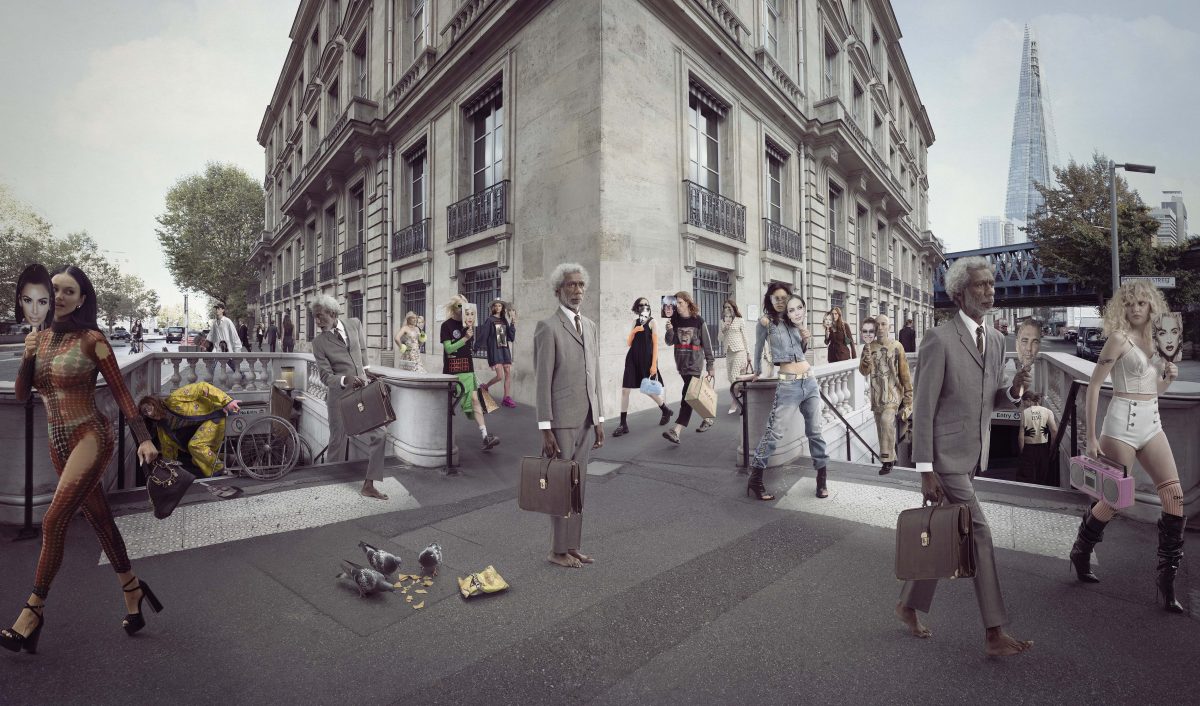
Michael Cook, Individuation – Persona, 2024, pigment photographic print on paper, 70.5cm x 120.5cm. Photo: NPG
The great thing about art competitions is that every visitor becomes a judge and a critic. Who would you have awarded the prize to if you had been the judge? My choice would have fallen to Michael Cook’s Individuation – Persona. Cook, a First Nations photographer from Brisbane, employs an urban setting into which he projects his features and those of a fellow Badtjala Country artist, Joey Gala.
These effectively subvert the normality of the urban environment. Without shouting about it, the bare-footed artist, clad in a suit, questions materialism, the lonely crowd and the Western values that have been introduced into what were his traditional lands.
The 2025 National Photographic Portrait Prize is a bold and provocative exhibition that will invariably make us question what is happening in Australia today. To some extent, it is an ‘’uncomfortable’’ exhibition and surely that is a hallmark of a good show.
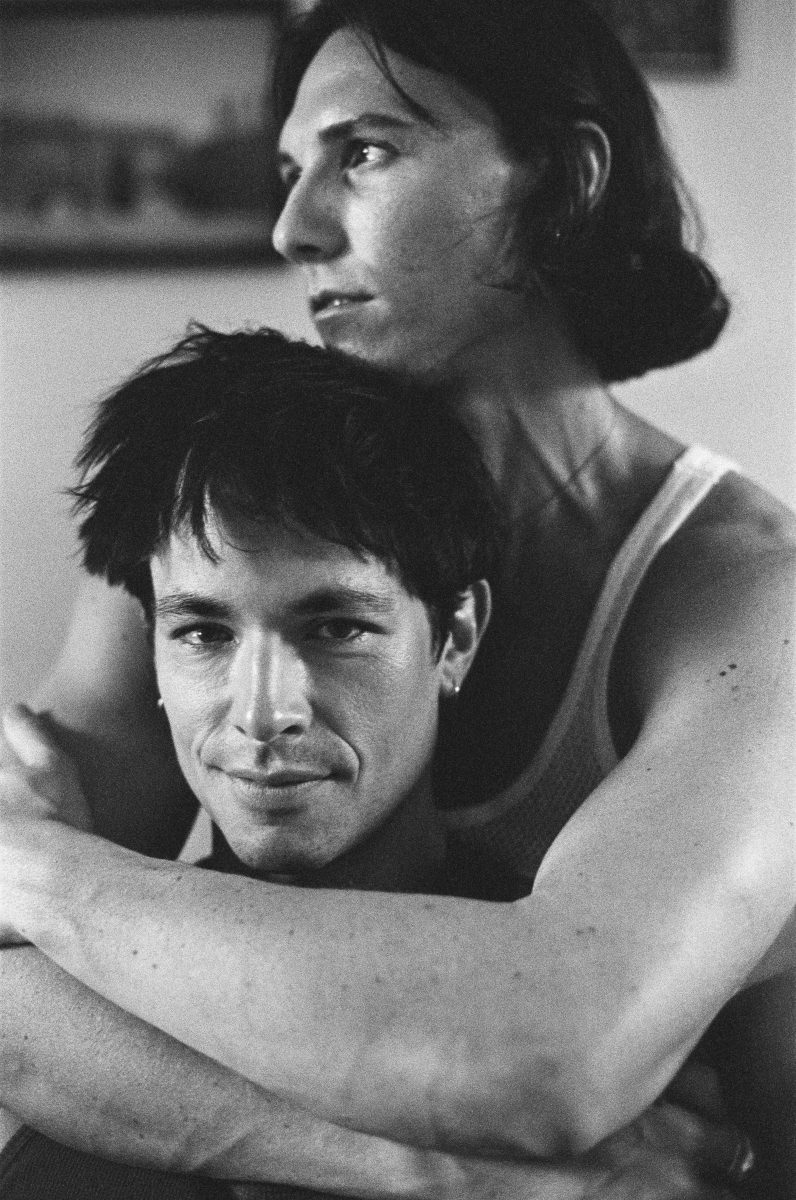
Torrey Bruinstroop, James & Riley at home [1], 2024, pigment photographic print on paper, 88.5 cm x 57.8 cm. Photo: NPG.














